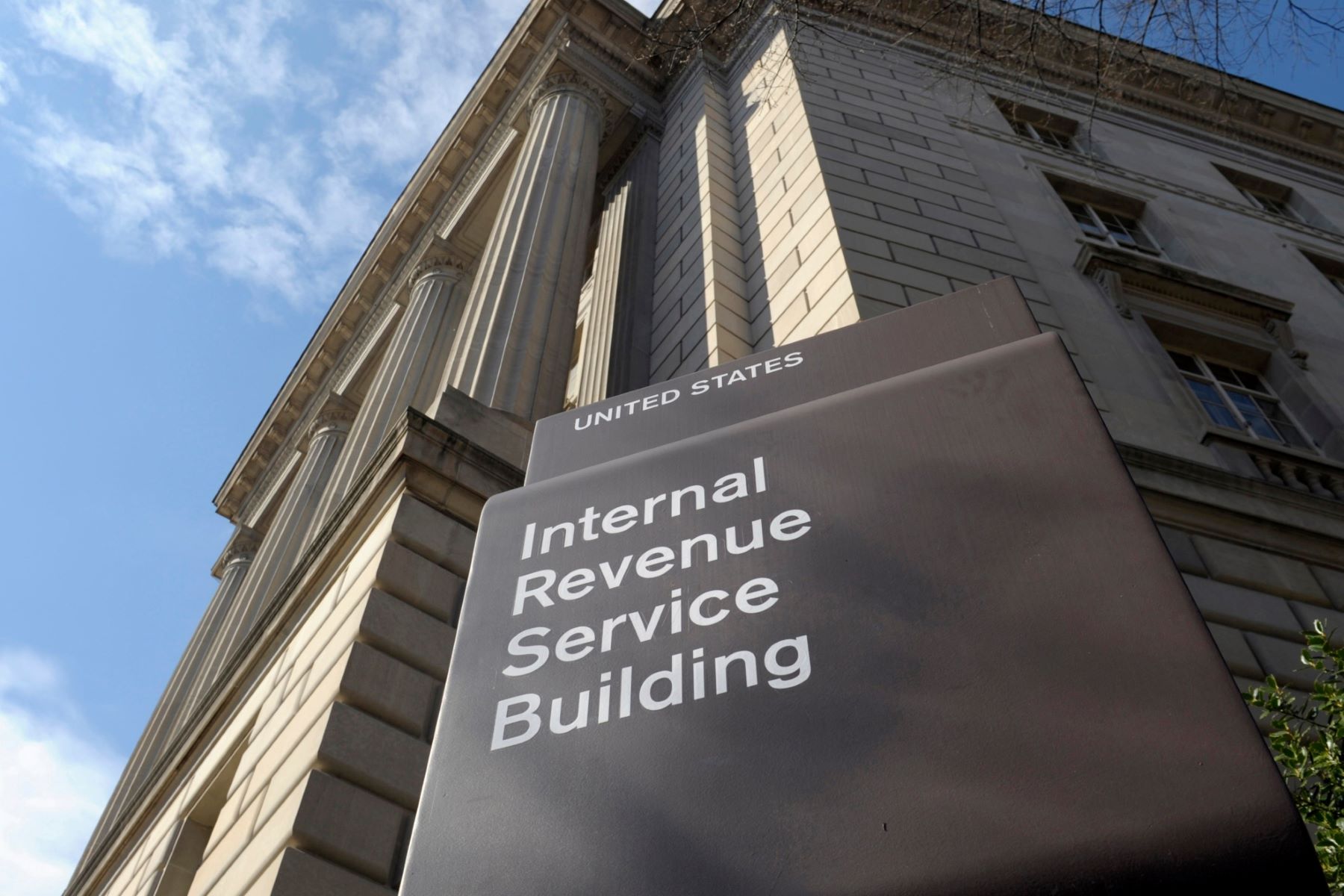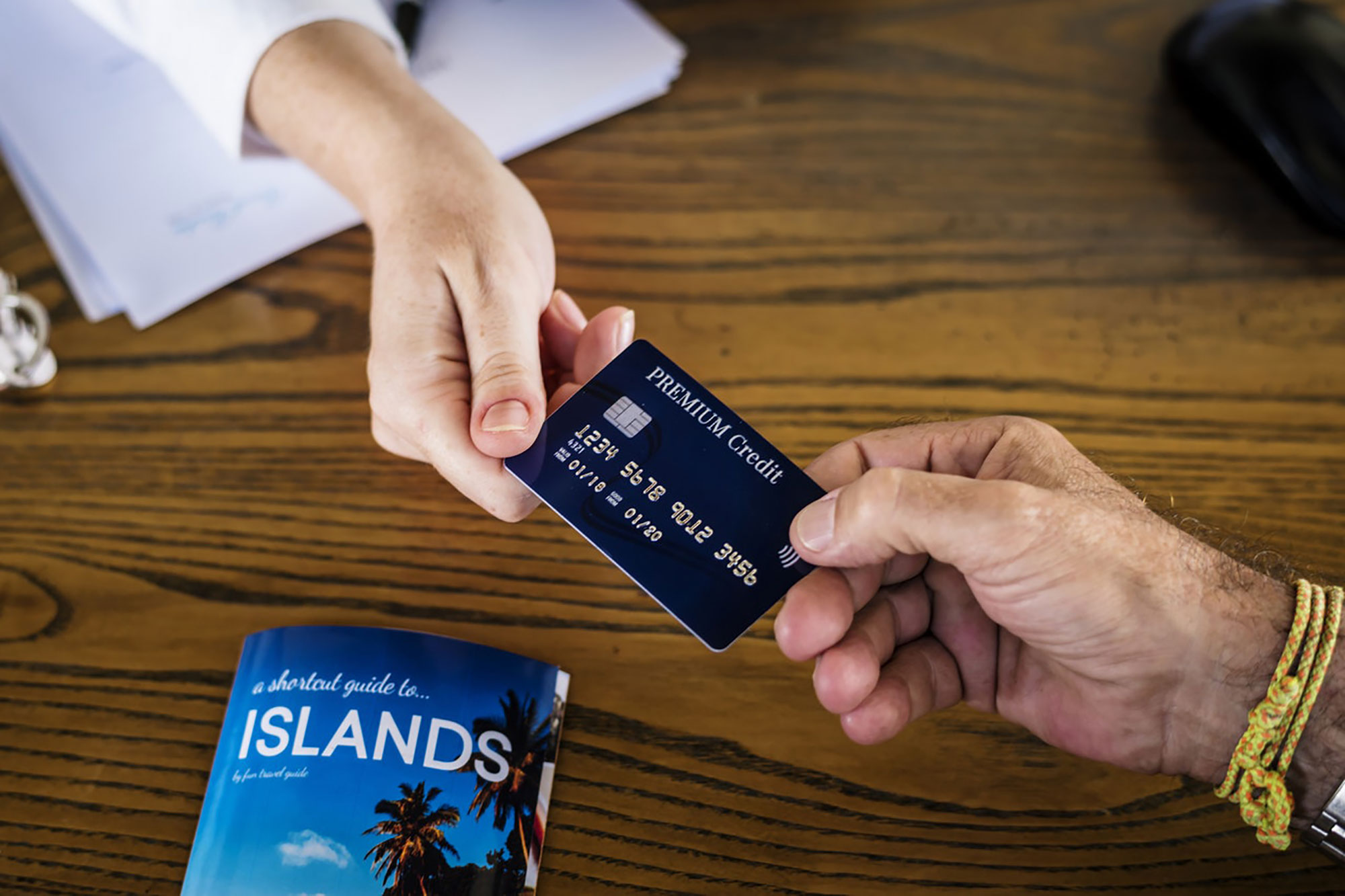

Finance
What Is Calling Credit
Published: January 5, 2024
Discover the importance of calling credit in managing your finances. Learn how calling credit can help you stay connected while staying within your budget.
(Many of the links in this article redirect to a specific reviewed product. Your purchase of these products through affiliate links helps to generate commission for LiveWell, at no extra cost. Learn more)
Table of Contents
Introduction
Welcome to the world of calling credit! In an increasingly interconnected world, the ability to stay connected with friends, family, and business contacts across different parts of the globe is paramount. Calling credit provides a convenient and cost-effective solution for making voice calls, whether it’s for personal or professional reasons.
Calling credit is a prepaid service that allows users to make phone calls from their mobile devices or landlines. It provides a way to pay for calls upfront, eliminating the need for traditional monthly phone plans or contracts. This flexibility ensures that users have control over their spending and can use their calling credit according to their needs.
Whether you need to make international calls, long-distance calls, or simply want to manage your monthly phone bill, calling credit offers a range of benefits and options to suit your requirements. In this article, we will explore the ins and outs of calling credit, how it works, the different types available, and the advantages and disadvantages of using it.
So, if you’re ready to dive deeper into the world of calling credit, let’s get started!
Definition of Calling Credit
Calling credit, also known as prepaid calling credit or phone credit, refers to a payment method used to facilitate phone calls by adding credit to a user’s account in advance. Essentially, it is a form of prepaid service that allows individuals to make outgoing calls using their mobile devices or landlines without the need for a monthly phone plan.
When users purchase calling credit, they essentially buy a predetermined amount of talk time or call credit, which is stored in their account. As they make calls, the credit is gradually depleted based on the call duration and destination. Once the credit runs out, users need to recharge or top up their account to continue making calls.
This pay-as-you-go system offers users greater control and flexibility over their phone usage. Unlike traditional monthly contracts that may have fixed limits or usage restrictions, calling credit allows users to determine how much credit they want to buy and use it as they see fit.
Calling credit is commonly used for making a variety of calls, including local calls, national calls, international calls, and even data usage for internet browsing. The specific services and features available may vary depending on the service provider and the country in which it is being used.
It’s important to note that calling credit is distinct from other types of prepaid phone plans, such as pay-as-you-go plans, which typically require users to buy a specific amount of credit that includes both call minutes and data usage. Calling credit, on the other hand, focuses solely on call minutes, making it an ideal option for those who primarily use their phones for voice calls rather than data-intensive activities.
Now that we have a clear understanding of what calling credit is, let’s delve into how it actually works.
How Calling Credit Works
Understanding how calling credit works is essential to make the most out of this prepaid service. When you purchase calling credit, you are essentially buying a specific amount of talk time or call credit that is added to your account. Here’s a step-by-step breakdown of how calling credit works:
- Purchasing Credit: To get started, you need to purchase calling credit from a service provider or through various online platforms. You can typically choose the amount of credit you want to buy, ranging from small denominations to larger increments.
- Account Setup: Once you have purchased the calling credit, you will need to set up an account with the service provider. This usually involves creating a user profile and providing necessary details.
- Credit Activation: After setting up your account, you will need to activate the calling credit by adding it to your account balance. This process is usually done by entering a unique code or PIN that is provided along with your credit purchase.
- Making Calls: With your calling credit loaded onto your account, you can start making calls. Simply dial the desired number, and the call will be connected. The call duration and credit usage will depend on the destination and rates set by the service provider.
- Monitoring Account Balance: It is important to keep track of your calling credit balance as you make calls. Most service providers offer an option to check your account balance either through a dedicated app, website, or by dialing a specific code.
- Recharging or Topping Up: Once your calling credit runs low or is depleted, you will need to recharge or top up your account to continue making calls. This can be done by purchasing additional credit and following the same activation process.
It’s worth noting that some service providers offer the option to auto-renew your calling credit, so you don’t have to manually top up each time it runs out. This can be a convenient option for those who frequently use calling credit and want to ensure uninterrupted service.
Moreover, calling credit is typically associated with a specific validity period within which you must use your purchased credit. The validity period can vary depending on the service provider and the amount of credit purchased. It’s important to be aware of this validity period to maximize your calling credit and avoid any loss of unused credit.
Now that you understand how calling credit works, let’s explore the different types available.
Different Types of Calling Credit
Calling credit comes in various types, each catering to different needs and preferences. Let’s take a closer look at some of the different types of calling credit available:
- International Calling Credit: This type of calling credit is specifically designed for making international calls. It offers competitive rates for calling overseas, allowing users to stay in touch with friends, family, and business contacts around the globe without breaking the bank.
- Local/National Calling Credit: Local or national calling credit is suited for making calls within a specific region or country. It is ideal for individuals who primarily make domestic calls and want to manage their phone expenses efficiently.
- Mobile Data Calling Credit: In addition to voice calls, some calling credit plans offer the option to use the credit for mobile data usage. This allows users to enjoy internet connectivity on their mobile devices, browse the web, use social media, and stay connected while on the go.
- Specialized Calling Credit: Some calling credit plans are designed for specific purposes or demographics. For example, there might be calling credit plans tailored for frequent travelers, students, or business professionals. These plans often come with additional perks and features that cater to the specific needs of the target audience.
- Bundled Calling Credit: Bundled calling credit combines both calling minutes and data usage into a single package. This type of calling credit is suitable for individuals who require a balance of voice calls and mobile data for their communication needs.
- Long-Distance Calling Credit: Long-distance calling credit is designed for making calls to distant locations within the same country. It offers competitive rates for individuals who frequently make calls to regions that are far away from their current location.
It’s important to assess your calling requirements and preferences to determine which type of calling credit suits you best. Consider factors such as your calling frequency, the destinations you commonly call, and any additional features you may require.
Now that we have explored the different types of calling credit available, it’s time to weigh the advantages and disadvantages of using this prepaid service.
Advantages of Calling Credit
Calling credit offers several advantages that make it a popular choice for many individuals. Here are some of the key advantages of using calling credit:
- Cost Control: One of the biggest advantages of calling credit is the ability to have complete control over your phone expenses. With calling credit, you pay for the exact amount of credit you need, eliminating any surprise charges or hidden fees.
- Flexibility: Calling credit provides flexibility in terms of usage. You can decide how much credit to purchase, based on your anticipated call volume, and use it at your own pace. This flexibility allows you to adjust your calling habits as needed without being tied to a fixed monthly plan.
- No Contracts: Unlike traditional phone plans that often require long-term contracts, calling credit operates on a prepaid basis, meaning there are no contracts or commitments. This allows you to use the service without any long-term obligations or penalties for early termination.
- International Calls: Calling credit is an excellent option for making international calls. It usually offers competitive rates for international dialing, allowing you to stay connected with friends, family, and business contacts abroad without incurring exorbitant charges.
- Convenience: With calling credit, you can easily recharge or top up your account whenever needed, using various convenient methods like online platforms, mobile apps, or vouchers. This convenience ensures that you never have to worry about running out of credit or being disconnected mid-call.
- No Credit Checks: Unlike traditional phone plans that often require a credit check, calling credit does not require any credit verification. This makes it a viable option for individuals with limited credit history or those who prefer to keep their personal financial information private.
- No Expiry: In many cases, calling credit has no expiry date or a long validity period. This means that any unused credit remains available for future use, giving you the freedom to manage your calling budget more effectively.
These advantages make calling credit an attractive option for those who value flexibility, cost control, and the ability to make calls without being tied to lengthy contracts or enduring credit checks.
While calling credit offers numerous benefits, it’s important to consider its disadvantages as well. Let’s explore them in the next section.
Disadvantages of Calling Credit
While calling credit offers many advantages, it is important to be aware of its disadvantages as well. Here are some of the key drawbacks of using calling credit:
- Limited Features: Calling credit is primarily focused on voice calls and may not offer the same range of features as traditional phone plans. Features such as voicemail, call forwarding, and conference calling may not be available or may incur additional charges.
- Higher Rates for Certain Destinations: While calling credit often offers competitive rates for international calls, some service providers may have higher rates for certain countries or regions. Before purchasing calling credit, it’s recommended to check the rates for the specific destinations you frequently call.
- Requires Regular Maintenance: Calling credit requires regular monitoring of your balance and the need to top up or recharge your account when the credit runs low. Forgetting to top up your account could result in temporary loss of service.
- No Data Usage: Most calling credit plans are primarily focused on voice calls, which means they do not include data usage. If you rely heavily on mobile data for internet access, you may need to separately purchase a data plan or consider a bundled calling credit plan.
- Limited Coverage: Some smaller service providers may have limited coverage compared to larger network carriers. It’s important to consider the coverage area and network availability before opting for a calling credit plan.
- Incompatibility with Certain Devices: Certain devices, particularly older or specialized models, may not be compatible with calling credit or require specific configurations to use the service. It’s essential to check the compatibility of your device with the calling credit service before making a purchase.
While these disadvantages may apply to certain situations or specific providers, it’s important to weigh them against the advantages and consider your individual needs and requirements before opting for calling credit.
Now that we have explored the advantages and disadvantages of using calling credit, let’s move on to how you can purchase calling credit.
How to Purchase Calling Credit
Purchasing calling credit is a straightforward process that can be done through various channels. Here are some common methods to purchase calling credit:
- Online Platforms: Many service providers offer the option to purchase calling credit through their official websites or mobile apps. Simply visit the provider’s website, select the desired calling credit amount, and proceed to the payment page. Once the transaction is completed, the calling credit will be added to your account.
- Retail Stores: Calling credit is often available for purchase at retail stores, including supermarkets, convenience stores, and dedicated mobile phone service providers. Look for prepaid calling credit cards or vouchers at the store’s communication section, select the desired denomination, and make your purchase at the checkout counter.
- Online Marketplaces: You can also find calling credit vouchers or top-up codes on various online marketplaces. These platforms allow sellers to offer calling credit codes that can be purchased and redeemed directly on your account. Make sure to purchase from reputable sellers and consider any additional fees or charges that may apply.
- Mobile Network Provider: If you are using a specific mobile network provider, they may have their own mobile apps or USSD codes that allow you to directly purchase calling credit or top up your account balance. Check their official website or contact their customer support for the specific instructions on how to purchase calling credit.
When purchasing calling credit, it’s essential to keep the following points in mind:
- Selecting the Right Amount: Consider your calling needs and frequency to determine the appropriate amount of calling credit to purchase. Buying too little credit may lead to frequent top-ups, while buying too much may result in unused balance or credit expiration.
- Checking Rates: If you plan to make international calls or calls to specific regions, check the call rates offered by the service provider. Ensure that the rates align with your budget and compare them with other providers to find the most cost-effective option.
- Credit Validity: Take note of the validity period associated with the purchased calling credit. Keep track of the expiry date to avoid losing any unused credit.
By following these steps and considering the factors mentioned, you can easily purchase calling credit and enjoy the benefits of prepaid calling for your communication needs.
Now that you know how to purchase calling credit, let’s explore some tips for using it efficiently.
Tips for Using Calling Credit Efficiently
Using calling credit efficiently can help you make the most out of your prepaid service and ensure that your calling needs are met without overspending. Here are some tips to help you use calling credit efficiently:
- Monitor Your Balance: Keep track of your calling credit balance regularly to avoid running out unexpectedly. Most service providers offer options to check your balance through their websites, mobile apps, or by dialing a specific code.
- Choose the Right Plan: Select a calling credit plan that aligns with your calling habits and needs. Consider factors such as the destinations you frequently call, call durations, and any additional features you may require, such as data usage.
- Utilize Wi-Fi Calling: Whenever possible, take advantage of available Wi-Fi networks for making calls. This can help conserve your calling credit since Wi-Fi calls typically use data instead of traditional minutes.
- Opt for Calling Apps: Consider using calling apps that utilize internet connectivity, such as Voice over IP (VoIP) apps, to make calls. These apps often offer competitive rates for international calls and can help reduce your reliance on traditional calling credit.
- Be Mindful of Call Durations: Keep a check on the duration of your calls, especially for international or long-distance calls. Being mindful of call durations can help you avoid excessive credit usage and manage your balance effectively.
- Take Advantage of Promotions: Keep an eye out for promotions or special offers provided by your calling credit service provider. This could include discounted rates, bonus credit, or other incentives that can help you save money on your calls.
- Consider Group Calling: If you frequently make calls to the same group of people, consider using conference or group calling features. This allows you to connect multiple people on a single call, saving both time and calling credit.
- Be Aware of Time Zones: If you make international calls, take note of the time zone differences to ensure you make calls during appropriate hours. This can help you avoid unnecessary charges for making calls during peak rate periods.
- Regularly Review Calling Patterns: Periodically assess your calling patterns and usage to identify any opportunities for optimization. You may discover that certain calls can be replaced with other communication methods, such as emails or messaging apps, to minimize calling credit consumption.
By following these tips and strategies, you can make your calling credit last longer, avoid unexpected balance depletion, and optimize your overall calling experience.
As we conclude our discussion on calling credit, it’s important to remember that the specific features, rates, and availability may vary depending on the service provider and your location. Therefore, it’s recommended to research different options and compare their offerings to find the best calling credit solution for your needs.
Now you are equipped with the knowledge to make informed decisions regarding calling credit. Enjoy staying connected with your loved ones and conducting business calls without worrying about excessive costs or limitations!
Conclusion
In conclusion, calling credit provides a convenient and flexible way to make phone calls without the need for long-term contracts or monthly phone plans. It allows individuals to have control over their phone expenses and make calls based on their specific needs and preferences.
We explored the definition of calling credit and learned how it works by purchasing a predetermined amount of talk time or call credit upfront. We also discussed the different types of calling credit available, including international calling credit, local/national calling credit, mobile data calling credit, specialized calling credit, bundled calling credit, and long-distance calling credit.
Calling credit offers several advantages, such as cost control, flexibility, no contracts, and the ability to make affordable international calls. However, there are also a few disadvantages to consider, such as limited features and potentially higher rates for certain destinations.
To purchase calling credit, you can utilize various methods, including online platforms, retail stores, online marketplaces, and through your mobile network provider. It’s important to select the right amount of calling credit, check call rates, and be aware of credit validity to make the most out of your purchase.
By following tips such as monitoring your balance, choosing the right plan, utilizing Wi-Fi calling, and being mindful of call durations, you can use calling credit efficiently and optimize your usage.
With the knowledge gained from this article, you are well-equipped to make informed decisions when it comes to using calling credit. Whether you need to stay connected with loved ones across the globe or manage your phone expenses more effectively, calling credit offers a convenient and cost-effective solution.
Remember to research different service providers, compare their rates and offerings, and choose the calling credit plan that best meets your needs. Enjoy the freedom, flexibility, and convenience that calling credit brings to your communication journey!














